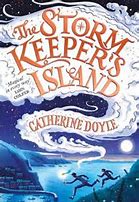The Museum of Peculiar Arts is shutting down. The neighborhood around it has gentrified, and now that it's 1952, people aren't interested in the old oddities and curiosities that it holds. 11-year-old Chance loves it, though; he's been helping its old owner, Fortunato, maintain it, and is especially fond of a Penny, a child-sized marionette, who's possible the last survivor of a legendary puppet show from long ago. The museum's closing isn't the only big change Chance faces--his family is moving out of the city to one of the bright new suburbs, and Chance hates that idea.
Penny is likewise unhappy. Though wooden, she is alive inside...and though her memories are foggy, she knows she does not want to spend years in storage.
Then Forunato offers her to Chance...and he accepts. When he touches her strings, he hears her voice inside his head, as clearly as she's always been able to hear him. And then things get creepy. There's a villain in the piece, a puppeteer who is pulling many strings. One string that he pulls swaps the spirits of Penny and Chance, and now it is his soul trapped in the wooden body, while Penny is free to be alive. Being a decent person, she's appalled by Chance's fate, but has no clue how to swap back, and conflicted feelings about giving up her new life.
But Constance, Chance's big sister, figures out what's happened. And she is not conflicted at all--she's going to rescue her brother, using her pretty astounding gift of conviction (the sort of conviction that can change reality through shear determination). And Chance, though for all intents and purposes a damsel in distress held by an evil warlock, is simultaneously doing his best to rescue himself, and his fellow imprisoned marionettes, using the tools he has--his ability to see, and to think (the narrative shifts between his point of view and the two girls). Penny is also in need of rescue, though the exact particulars of the magic in which she is trapped are a mystery for most of the book, and she also helps with the rescue; not with ostentatious heroics, but mainly with her decency.
So basically this is a book about three strong characters who are all very likeable, whose relationships are founded on sibling loyalty and complicated feelings about what it means to be alive, trapped in a magical mystery with a distinct touch of 1950s noir (for instance, a radio character named The Storm provides inspiration to the kids, and is alluded to, and even quoted, often). There's an emotionally satisfying mystery to be unraveled that's bigger and more deeply rooted than the immediate situation. It also has lots of nice gender-stereotype confrontations, like Chance's parents' dismay when he brings the marionette (basically a giant girl doll) home with him, and Constance's attitude toward fairy tales--"I just don't think it's fair.... that boys with magic are written as exceptionally smart, but girls with magic are written as exceptionally mean." (p 118)
Or as Kirkus (in agreement with me) says in its starred review:
"The beautifully creepy plot deftly weaves together old-time–y fears with fresh outlooks through richly realized characters who feel immediate and modern despite the 1952 setting. Especially well done is the approach to gender, as Chance, Penny, and Constance all struggle with different realities of embodiment and expression without resorting to cheap sentiment or heavy-handedness."


















